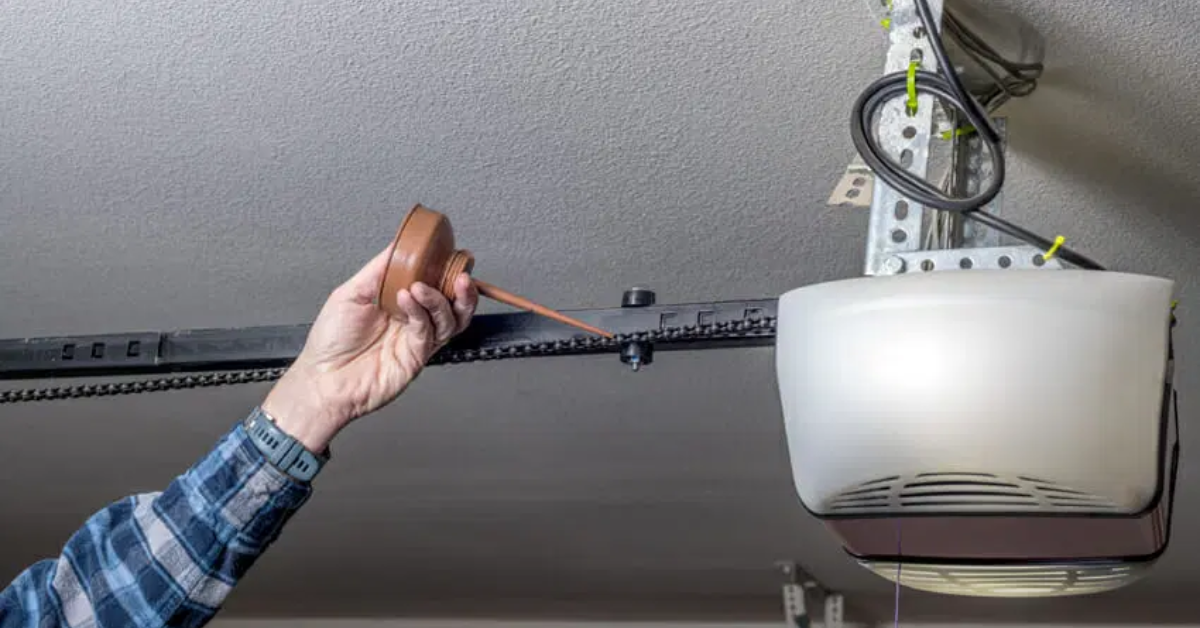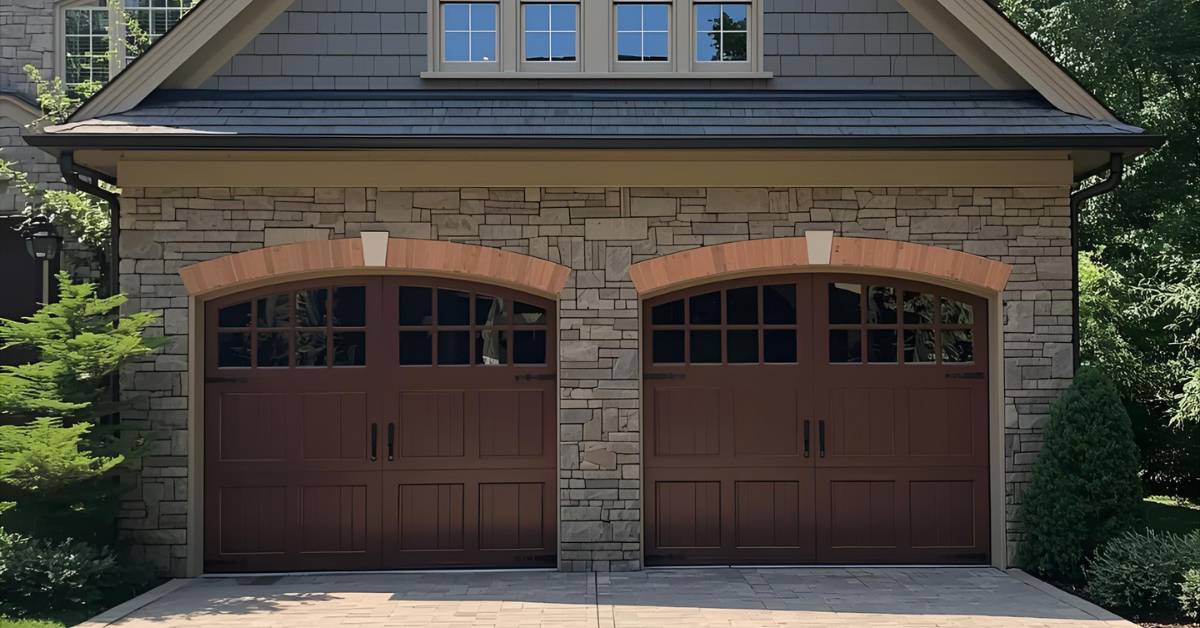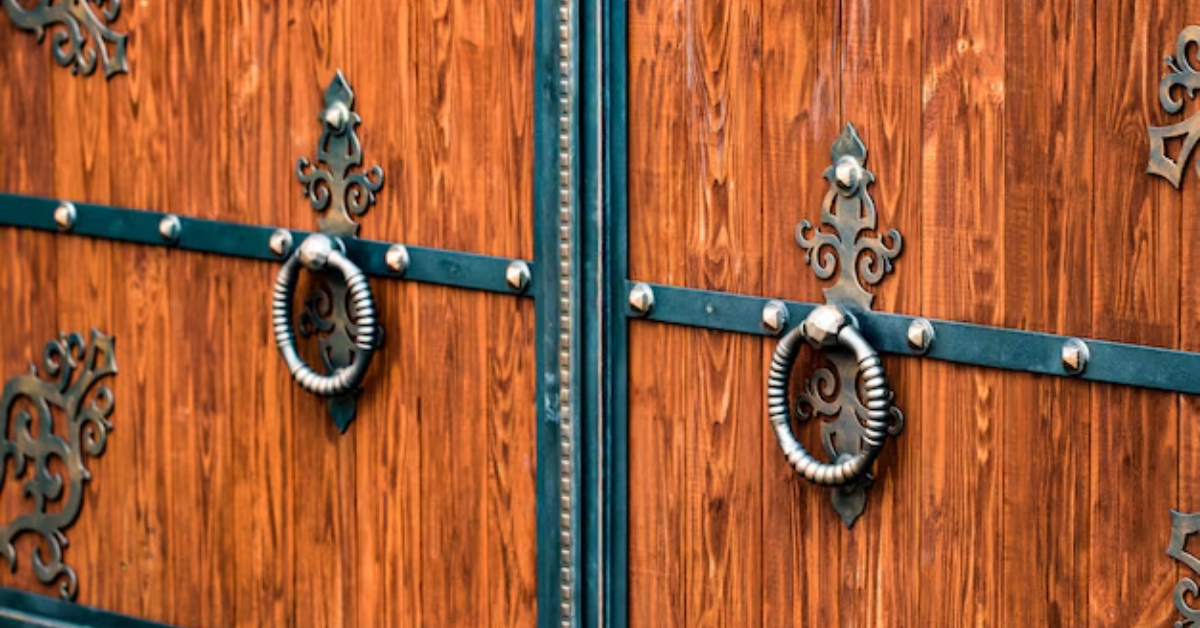Where and How to Lubricate Your Garage Door for Smooth Operation?
A well-functioning garage door is not merely a convenience but a cornerstone of seamless daily routines. Yet, amidst its consistent use, the vital aspect of maintenance often goes overlooked. One of the fundamental yet often underestimated elements of garage door care is lubrication. A garage door system's longevity and efficiency are largely determined by lubrication. It serves as the silent caretaker, shielding crucial components from wear, reducing friction, and ensuring smooth operations. Essentially, it's the invisible force behind the effortless glide of your door, enhancing its functionality and prolonging its lifespan.
With the help of this comprehensive guide, we'll show you precisely where and how to apply
lubricant to your garage door, equipping you with the knowledge to keep it operating smoothly and reliably.
Identifying Essential Parts to Lubricate
A garage door is a complex interplay of various components working harmoniously to facilitate smooth and efficient movement. Understanding the intricacies of these parts is crucial in knowing where and how to apply lubrication effectively.
1. Rollers and Tracks
Among the primary components are the rollers and tracks, forming the backbone of the door's movement.
Rollers, typically made of steel or nylon, glide within the tracks, ensuring the door moves up and down smoothly. However, due to their constant movement, these components are susceptible to accumulating grime, dust, and debris, leading to increased friction. Lubricating these parts ensures friction is minimized, allowing for effortless door operation.
2. Hinges and Bearings
The hinges connecting the
door panels and the bearings supporting these hinges play a pivotal role in the door's flexibility and stability. Over time, these areas can also collect dirt and dust, impeding their ability to function optimally. Proper lubrication helps maintain their mobility, preventing stiffness and ensuring the door's seamless movement as it opens and closes.
3. Springs and Chains
The springs counterbalance the weight of the garage door, while chains or belts aid in lifting and lowering the door. Both these elements endure significant tension and stress during operation. Lubricating these components minimizes wear, reduces strain, and prevents corrosion, thereby prolonging their lifespan and ensuring the door operates without undue strain.
These components, while essential, are also particularly vulnerable to wear and friction due to their constant movement and exposure to environmental elements. Accumulated dirt, lack of lubrication, and natural wear and tear can lead to issues such as jerky movements,
excessive noise, and in extreme cases, component failure.
By paying close attention to these critical components and understanding their susceptibility to wear and tear, homeowners can proactively address maintenance needs, ensuring the smooth functioning of their garage door system for years to come.
Choosing the Right Lubricant
Selecting the appropriate lubricant for your garage door is pivotal in ensuring optimal performance and longevity of its components. There are various lubricants available, each designed for specific purposes and materials within the door system.
Silicone-Based Lubricants:
Silicone-based lubricants are popular choices for garage door maintenance. Known for their versatility, they work well with metal, plastic, and rubber components. These lubricants offer excellent resistance to temperature extremes and repel dust and debris, making them a favorable option for smoother door operation.
Lithium Grease:
Lithium grease is another widely used lubricant, particularly effective for metal-to-metal applications within the garage door system. It provides exceptional lubrication and adheres well to surfaces, offering long-lasting protection against rust and corrosion.
Teflon-Based Lubricants:
Teflon-based lubricants, often in spray form, are renowned for their ability to create a dry, friction-reducing film on surfaces. They are suitable for hinges, rollers, and tracks, minimizing accumulation of dirt and debris while ensuring smooth movement.
Factors to Consider When Selecting Lubrication Products
While the market offers a range of lubricants,
several key factors should guide your choice for the most suitable product:
- Ensure the lubricant is compatible with the materials used in your garage door system. Some lubricants may not be suitable for certain materials, potentially causing damage or ineffectiveness.
- Opt for lubricants that offer long-lasting effects without leaving sticky residues. Residues can attract dirt and debris, negating the lubricant's benefits and potentially causing more harm than good.
- Consider the climate in your region. Some lubricants perform better in extreme temperatures, offering consistent lubrication despite fluctuations in weather conditions.
- Choose a lubricant that's easy to apply and suits your preferred method of application—whether spray, gel, or liquid—to ensure convenient and thorough coverage.
By considering these factors and understanding the specific characteristics of various lubricants, you can make an informed choice, ensuring the optimal performance and longevity of your garage door components.
Step-by-Step Guide to Lubricating Your Garage Door
Before diving into the lubrication process, it's crucial to prepare the door and its components:
Begin by cleaning the various components of your garage door system. Remove dirt, grime, and old lubricant residue using a mild detergent or a suitable cleaning solution. Wipe the surfaces dry to ensure a clean base for the lubricant. Inspect the components for any signs of damage or wear. Address any visible issues before proceeding with the lubrication process to prevent exacerbating existing problems.
Applying Lubricant to Specific Components
Rollers: Using a silicone-based spray or a recommended lubricant, apply a small amount directly to the rollers. Move the door up and down to ensure the lubricant spreads evenly across the roller surfaces.
Tracks:
Apply the lubricant along the tracks, focusing on the areas where the rollers make contact. Avoid over-application, as excess lubricant can attract debris.
Hinges: Add lubricant to the pivot points of each hinge. Open and close the door to allow the lubricant to work into the hinge mechanisms, ensuring smooth movement.
Bearings: For bearings, use a small amount of lubricant on each bearing point to maintain their mobility and reduce friction.
Springs: Apply a light coat of lubricant to the springs while ensuring you don’t oversaturate them. Focus on the coils and connections.
Chains:
For chain-driven systems, apply lubricant sparingly along the length of the chain, wiping off any excess to prevent accumulation of dirt.
By following these steps and applying the appropriate lubricant to these specific components, you ensure smoother operation and prolong the lifespan of your garage door system.
Best Practices and Tips for Effective Lubrication
Maintaining a consistent lubrication schedule is vital for the optimal functioning of your garage door system. While the frequency may vary based on usage and environmental factors, here are some guidelines:
- Aim to lubricate your garage door components at least twice a year. Consider doing so at the beginning of spring and fall to prepare for temperature changes.
- If your garage door experiences heavy use, such as multiple openings and closings throughout the day, consider lubricating the components more frequently, perhaps every three to four months.
- Take note of your location's climate. Areas with extreme temperatures or high humidity levels might necessitate more frequent lubrication to counteract the effects of moisture and temperature fluctuations.
Additional Maintenance Steps for Longevity
Apart from regular lubrication, implementing these additional maintenance steps can significantly contribute to the longevity of your garage door:
- Conduct routine inspections of your garage door system. Check for signs of wear, damage, or misalignment. Ensure smooth operation by addressing any issues promptly.
- Periodically check for loose bolts, nuts, or screws and tighten them as needed. Vibrations from door movements can cause hardware to loosen over time.
- Maintain cleanliness around the garage door area. Keep tracks, rollers, and hinges free from dirt, debris, and obstructions. A clean environment reduces the chances of dirt interfering with the door's operation.
- Consider scheduling professional servicing annually or bi-annually. Expert technicians can conduct a thorough inspection, perform adjustments, and identify potential issues before they escalate.
By adhering to these best practices, including a consistent lubrication schedule and implementing additional maintenance steps, you can extend the life and functionality of your garage door system, minimizing the need for costly repairs and ensuring reliable operation.
Troubleshooting and Common Issues
Recognizing signs of inadequate lubrication is crucial to preventing potential problems with your garage door system. Look out for these indicators:
Unusual Noises:
If your garage door starts producing grinding, squeaking, or screeching sounds during operation, it's often a sign of insufficient lubrication. These noises typically stem from metal components rubbing against each other due to lack of proper lubrication.
Difficulty in Movement:
A garage door that feels stiff or becomes challenging to open or close smoothly may indicate inadequate lubrication. Sticking points or jerky movements are common signs that certain components need proper lubrication.
Increased Friction: Noticeable friction while manually operating the door or visible signs of wear on the components, such as excessive rust or debris buildup, suggest a lack of proper lubrication.
Professional Maintenance vs. DIY Approach
While many homeowners prefer a hands-on approach to garage door maintenance, there are instances when seeking professional assistance is recommended. If your garage door experiences significant issues like broken springs, damaged cables, or motor malfunctions, it's advisable to consult a professional. These repairs often require specialized knowledge and tools.
For individuals unfamiliar with garage door systems or lacking experience in handling mechanical components, seeking professional assistance ensures safety and prevents accidental damage. Garage doors operate under high tension and can pose safety risks during repairs. If you're unsure about handling certain components safely, it's best to leave it to trained technicians to avoid accidents.
DIY Maintenance Techniques for Homeowners
However, there are numerous
DIY maintenance tasks that homeowners can undertake to keep their garage doors in good working condition. Conduct routine visual inspections of the door's components. Look for signs of wear, misalignment, or damage and address minor issues promptly. As discussed earlier, regularly lubricate the essential components of your garage door system. This simple yet crucial task can be easily performed by homeowners with the appropriate lubricant and guidelines.
Keep the tracks, rollers, and hinges clean from dirt and debris. Regular cleaning helps prevent issues caused by accumulation and ensures smoother operation. Periodically check for loose bolts, screws, or nuts and tighten them as needed. This straightforward task prevents unnecessary vibrations and potential malfunctions. Test safety features such as the auto-reverse mechanism regularly to ensure they're functioning correctly. This can be done by placing an obstacle in the door's path while closing it to check if it reverses.
Engaging in these DIY maintenance tasks allows homeowners to contribute to the upkeep of their garage door system, promoting its longevity and minimizing the need for frequent professional intervention.
Conclusion
Regular lubrication stands as the linchpin of a well-functioning garage door, safeguarding against wear and ensuring smooth operation. By adhering to a consistent lubrication schedule for essential components like rollers, tracks, hinges, and springs, homeowners extend the system's life and reduce noise. Attention to cleaning, timely repairs, and prioritizing safety not only enhances functionality but also ensures a hassle-free and efficient experience with the garage door, making maintenance a key contributor to its longevity and reliability.




